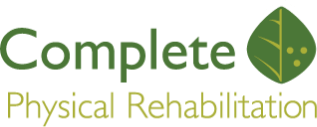As the summer has arrived, we look to our knees to provide us the locomotion and cushion needed for our outdoor activities. Whether it is running for distance, jumping and hopping on the basketball court, or sprinting to the finish line, this summer is about our knees. In this first report, I will discuss patellar tendon pain, aka runners knee.
Quite simply, it is repetitive strain and overuse of the patellar tendon. Most of you will know this as a sharp, sometimes burning pain in the front of the knee just below the knee cap. The origin of this pain stems from overuse and increased stress onto a tendinous structure that normally has truly marvelous abilities, overall. The patellar tendon, although deceptively and comically small in stature to other structures in the body, has the ability, in combination with its trusty side kick the knee cap, in propelling the totality of the weight of your body in the air either on one leg or two. Also, the patellar tendon has the strength and flexibility to create enough leverage over a long distance to advance the body one step at a time at a slow or fast speed.
As strong, durable, and flexible as this tendon is, it is prone to overuse. Overuse can lead to runner’s knee, something that every runner that I’ve treated with Physical Therapy has experienced at least once in their running career. When this ailment does come about, I always recommend these first three steps to all my Physical Therapy patients to deal with the issue at home.
Stop What You Are Doing
Earlier in this article, I already simply outlined the common pain symptoms associated with runner’s knee. So when you feel this pain, it is of the utmost importance to stop the activity that you are engaging in immediately. Whatever it is you are doing at the moment may be the cause of the pain. Continuing to engage in the activity will certainly lead to a worsening of the condition overall.
Check Your Patellar Tendon
After you’ve stopped what you are doing, you can do a quick check of your patellar tendon to see if it’s swollen or painful. Your patellar tendon is the tendon right below your kneecap . Here’s a great, quick video that’ll give you an idea on how to gently check your patellar tendon
As you can see, a check of your patellar tendon should only take you a few seconds. Give it a very tender pinch. If you feel any pain or if it feels and looks swollen, then you know that, most likely, you have injured your patellar tendon.
Ice, Ice, Baby
As with all things swollen, ice it! For my Physical Therapy patients, I always recommend for runner’s knee to ice for no more than 5 min at a time with a small Dixie cup filled with ice, commonly known as an “ice massage”.
After icing for 2 days, you can start back to stretching the area. My favorite stretch to recommend to my Physical Therapy patients is the quad stretch while lying down on your stomach.

With the quad stretch, in order to make sure that you’re giving a proper stretch for your knee and the patellar tendon, you have to make sure that your leg up to your knee stays FLAT on the ground (as in the picture). If you are unable to reach your foot while keeping the leg flat, use a stretching strap of some sort to assist you in the stretch.
In addition, you can engage in light, pain free physical activity that puts moderate load onto the tendon through either mini squats or mini lunges. And as always, if the pain is a constant recurrence, please RUN, not walk to my Physical Therapy office in Jersey City or Elizabeth, or run to your own trusty neighborhood Physical Therapist of choice for further instruction as to preventative measures against further harming the patellar tendon.
Dr. James Pumarada is a licensed Physical Therapist with over 18+ years of experience. He is a Sports Therapy Certified therapist, focusing on treating and training runners of all levels, and is a certified Vestibular therapist, specializing in the treatment of all dizziness, vertigo, and imbalance issues.
He is the co-owner of Complete Physical Rehabilitation, a Physical Therapy practice based in Elizabeth and Jersey City, NJ.

